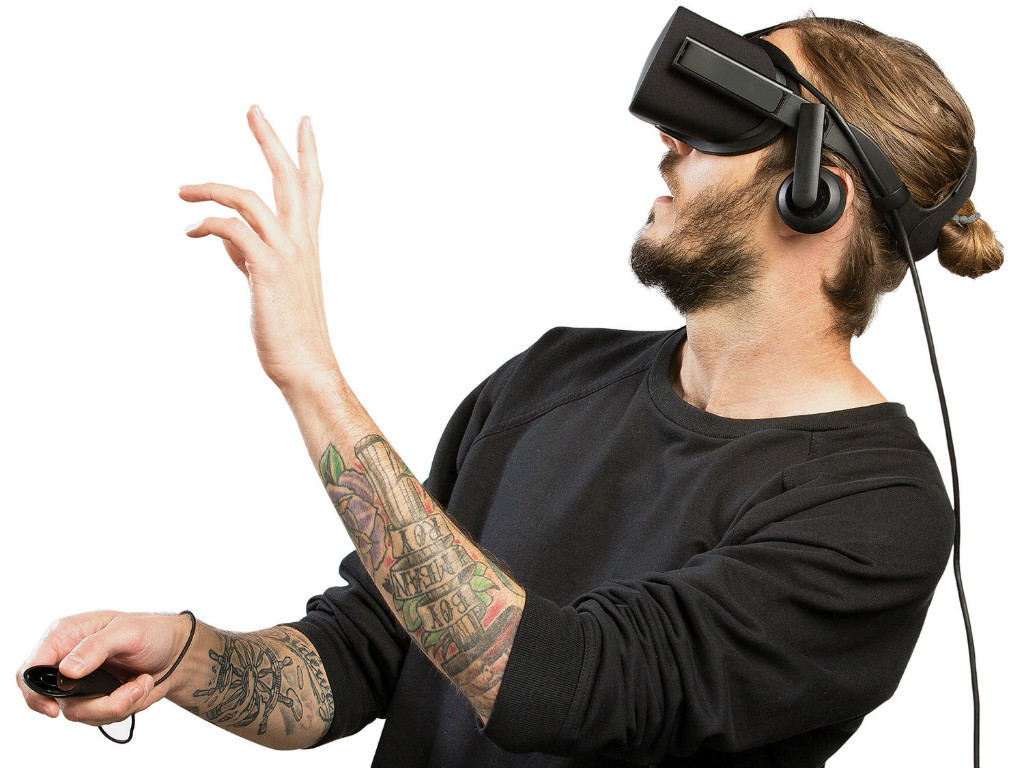
By far, the hottest technology buzzword and trend right now is “virtual reality.” For the past few years, we’ve been told about the coming wave of mainstream “VR” headsets that would immerse us in our game worlds like never before, transport us to faraway places without having to leave our living rooms, and connect us in ways we never thought possible. This year, we’ve seen all those promises come true, as numerous VR headsets have become available for us to purchase. The headset that kicked off the VR revolution, though, is the Oculus Rift, and I’m going to tell you why it’s quite possibly the coolest tech gift this season.
What is Virtual Reality?
V irtual reality (or VR) is when computer technology generates realistic images, sounds and sensations that replicate an environment (real or imaginary) and simulate a user’s physical presence within this environment. Basically, users wear a headset that resembles ski goggles, which gives them the sensation of actually being inside an environment, such as a game world. The VR headsets come with sensors, and accelerometers, so they can tell where you are looking, allowing users to “look” around the simulated area they are in, as though they were really there. Imagine, instead of looking at a 2D world through your computer monitor, you can turn your head up, down, side to side, and experience actually being inside the game world. Users also are equipped with stereo headphones, as well, which adds to the immersive experience. Say, you’re playing a game like Call of Duty. You can actually hear the footfalls of people behind you, peer over your shoulder and see them coming. It is definitely something you need to experience to fully appreciate, however, you get the idea.
irtual reality (or VR) is when computer technology generates realistic images, sounds and sensations that replicate an environment (real or imaginary) and simulate a user’s physical presence within this environment. Basically, users wear a headset that resembles ski goggles, which gives them the sensation of actually being inside an environment, such as a game world. The VR headsets come with sensors, and accelerometers, so they can tell where you are looking, allowing users to “look” around the simulated area they are in, as though they were really there. Imagine, instead of looking at a 2D world through your computer monitor, you can turn your head up, down, side to side, and experience actually being inside the game world. Users also are equipped with stereo headphones, as well, which adds to the immersive experience. Say, you’re playing a game like Call of Duty. You can actually hear the footfalls of people behind you, peer over your shoulder and see them coming. It is definitely something you need to experience to fully appreciate, however, you get the idea.
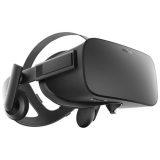
What is the Oculus Rift?
In 2012, a company called Oculus VR started a Kickstarter campaign to crowdfund some cash to develop a virtual reality headset called the Oculus Rift. People were so impressed with the campaign that it smashed its initial goals for fundraising, raking in $2.5 million from independent investors on the internet. Within two years, a little company called Facebook (you know, the one with the social media website you spend most of your work day pretending not to look at?) decided the Oculus Rift was the next big thing, too, and they bought Oculus for a cool $2 billion. While developing its consumer model, Oculus allowed pre-production models of its headset to go out to game and content developers, so they could get a head-start on creating virtual reality experiences for when the headsets were finally commercially launched this past year.
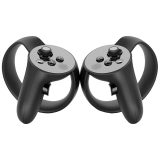 Technically, the Oculus Rift features an OLED display with 1080×1200 resolution per eye, a 90Hz refresh rate and a 110 degree field of view. It offers positional tracking, integrated stereo headphones, and works with the Oculus Touch VR controllers. The controllers allow for a more tactile and realistic VR experience, by incorporating tracked hand a finger gestures. The sensors for the whole Oculus Rift setup usually sit on the user’s desk, where they track head and hand movements and translate that into the VR experience.
Technically, the Oculus Rift features an OLED display with 1080×1200 resolution per eye, a 90Hz refresh rate and a 110 degree field of view. It offers positional tracking, integrated stereo headphones, and works with the Oculus Touch VR controllers. The controllers allow for a more tactile and realistic VR experience, by incorporating tracked hand a finger gestures. The sensors for the whole Oculus Rift setup usually sit on the user’s desk, where they track head and hand movements and translate that into the VR experience.
What can you do with an Oculus Rift?
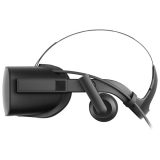
The Oculus Rift’s primary focus is as a gaming device. At release, the Rift offered several VR-ready titles, including EVE: Valkyrie, as well as games modded by those in the gaming community to work with the Rift. However, developers have continued to add more titles, ranging from puzzle games and simulators to first-person-shooters and survival games. More games and experiences are being added every day, meaning the Oculus Rift already has a wealth of games for users to enjoy.
But, Facebook would not have invested $2 billion for something that just played games.
The Oculus Rift can also deliver rich and wide-screen cinema experiences and the ability to watch 360 degree virtual reality movies. There is also a big social aspect to the Oculus Rift. Places like AltspaceVR let users inhabit shared virtual spaces, interact with in-world objects and share internet content. And both the founder of Second Life and the company behind the online game world have said they are developing virtual reality worlds specifically for the Oculus Rift. And there has already been at least one television series shot with a few virtual reality episodes for viewers to experience, while Fox Sports has even begun producing some VR sports coverage. So, now instead of sitting there watching football on your couch, you could be actually on the sidelines, watching the game in the stadium, and able to look around like you are really there. You’ll have to supply your own watered down beer and overpriced hotdogs, though. But, imagine what can be done in the future with concerts, festivals and other entertainment.
And besides entertainment uses, the Oculus Rift has industrial and medical uses, letting people tour homes that are for sale without leaving their own domiciles, or letting doctors consult on important operations from afar. Really, there is no limit to what can be done with VR now that the technology has hit the mainstream.
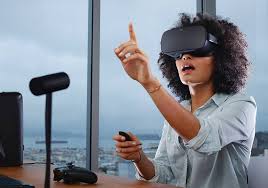
What do I need to use an Oculus Rift?
Okay, amazing virtual reality experiences don’t come without their costs. To use an Oculus Rift, you’ll need a PC computer with an Intel® Core™ i5-4590 equivalent or greater, NVIDIA GeForce GTX 970/AMD R9 290 equivalent or greater, 8GB RAM or more, Compatible HDMI 1.3 video output, three USB 3.0 ports plus one USB 2.0 port, and be running Windows 7 SP1 64-bit or newer. Those are hefty specs, but if you have a brand new machine, chances are you may meet those minimum recommendations.
But for the tech lover, investing in a new gaming rig is nothing compared to being able to finally enter our game worlds and really feel like we’re immersed in the action. So, if you have a techie on your holiday shopping list this season, the Oculus Rift is by far one of the coolest gifts of the holidays, and one that will certainly earn you the title of “gift giver of the year.”
Have you joined the virtual reality revolution yet? Have you tried out any of the headsets out there? Would you buy an Oculus Rift? Let me know what you think of all this virtual reality stuff in the comment section below.



